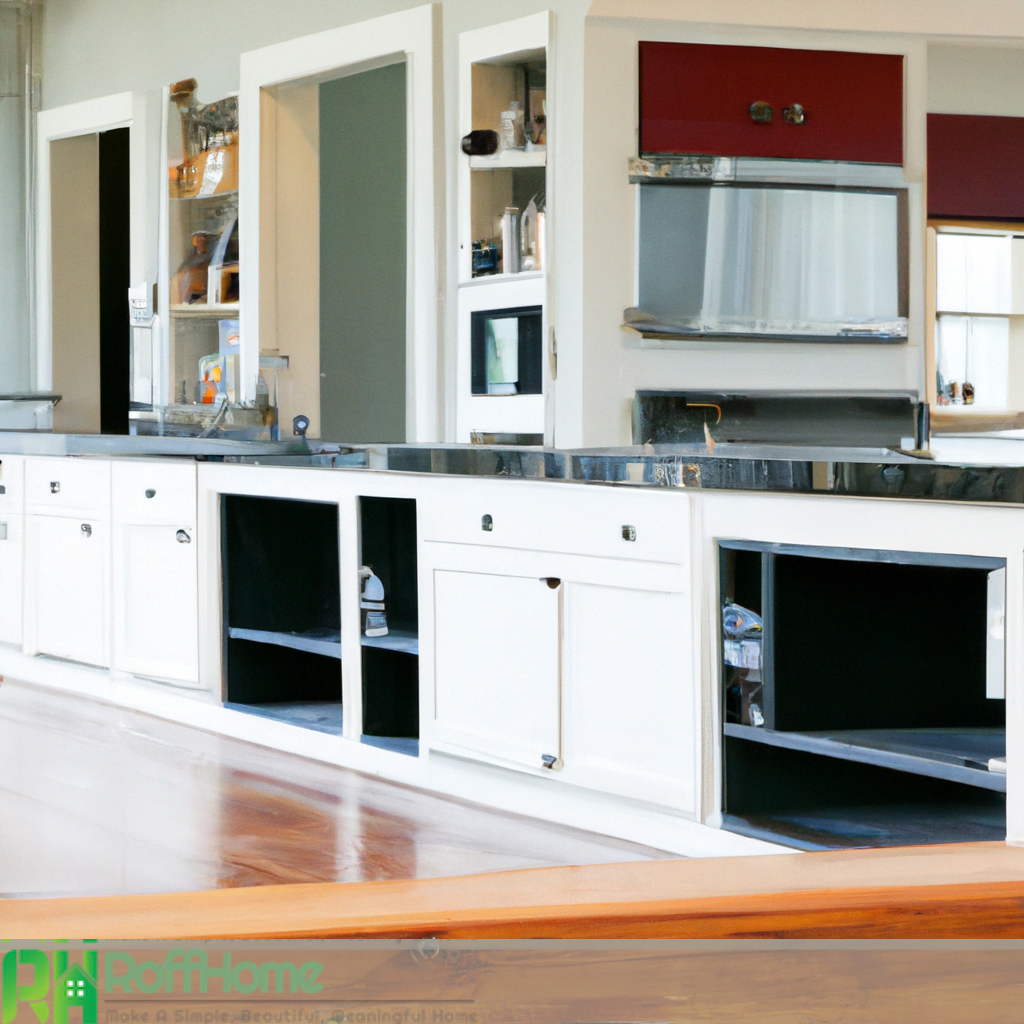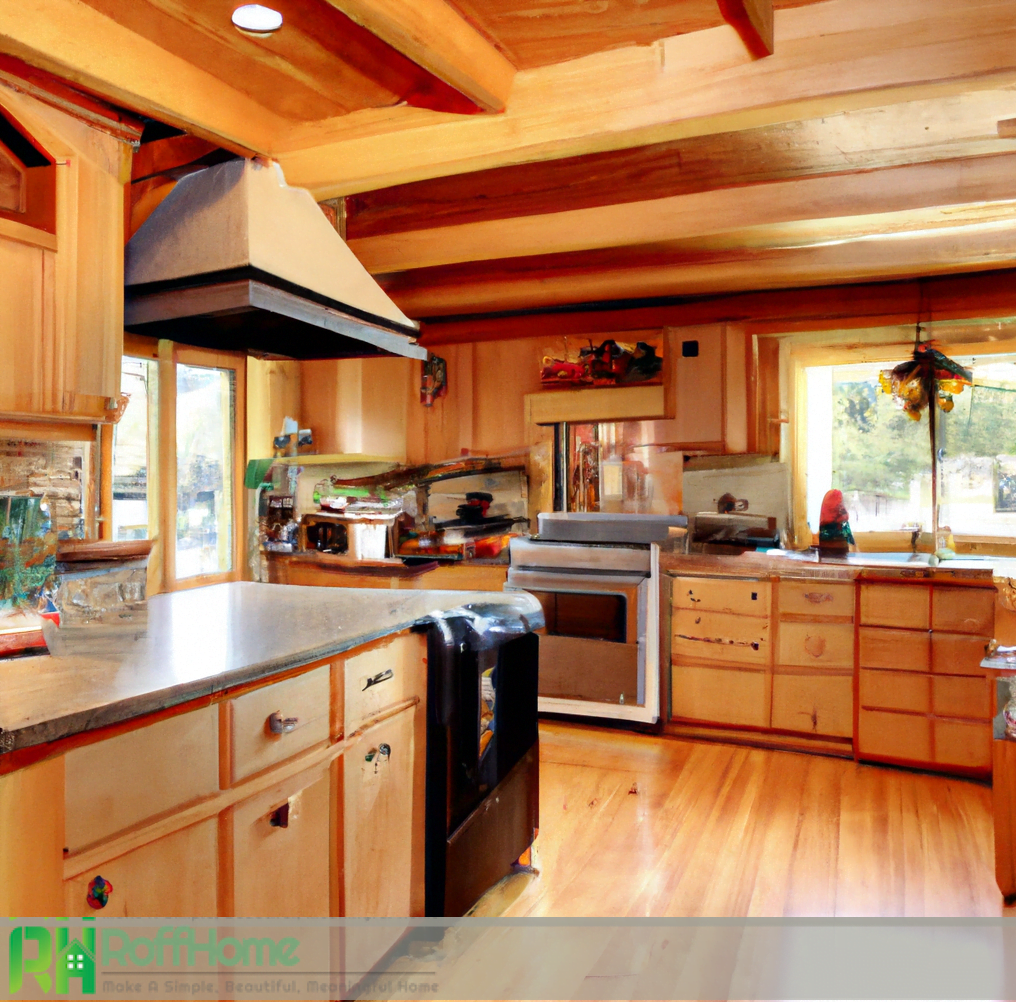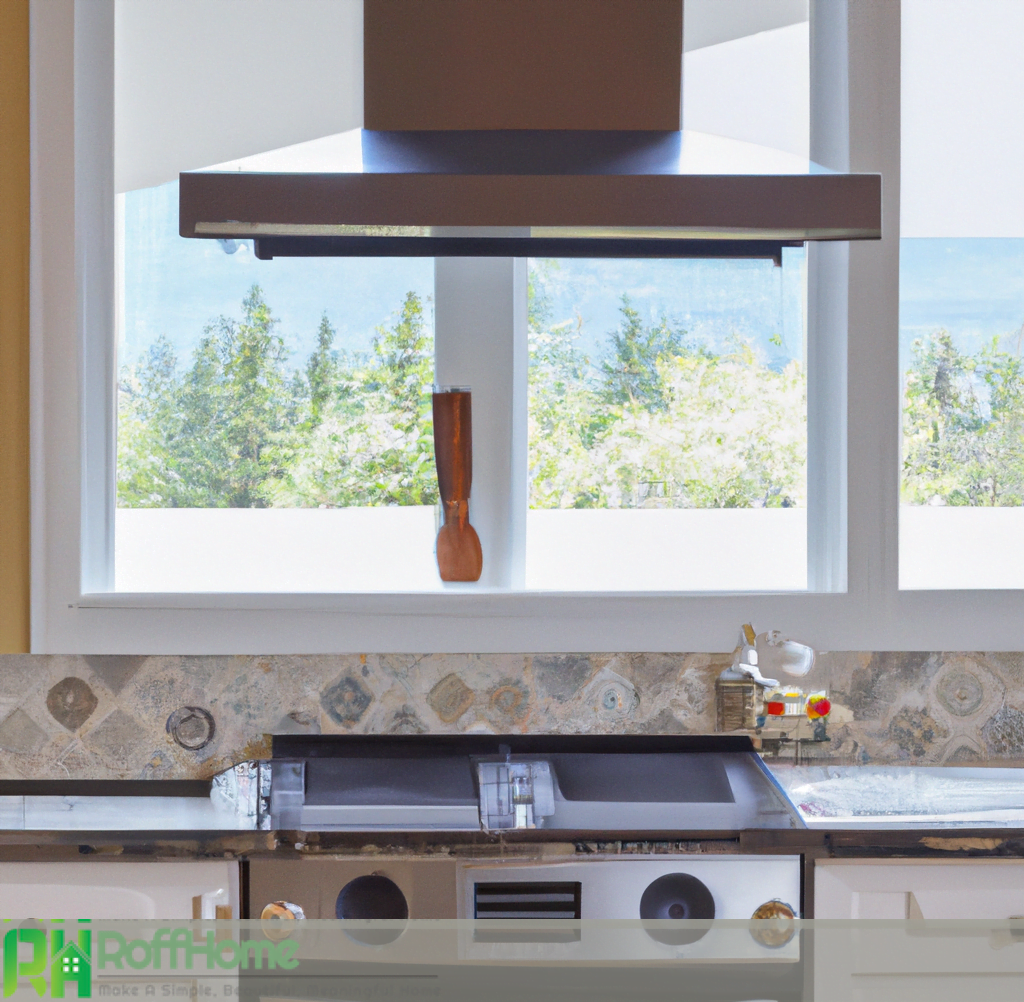10 Inspiring Large Kitchen Layouts for Functional and Stylish Cooking Spaces
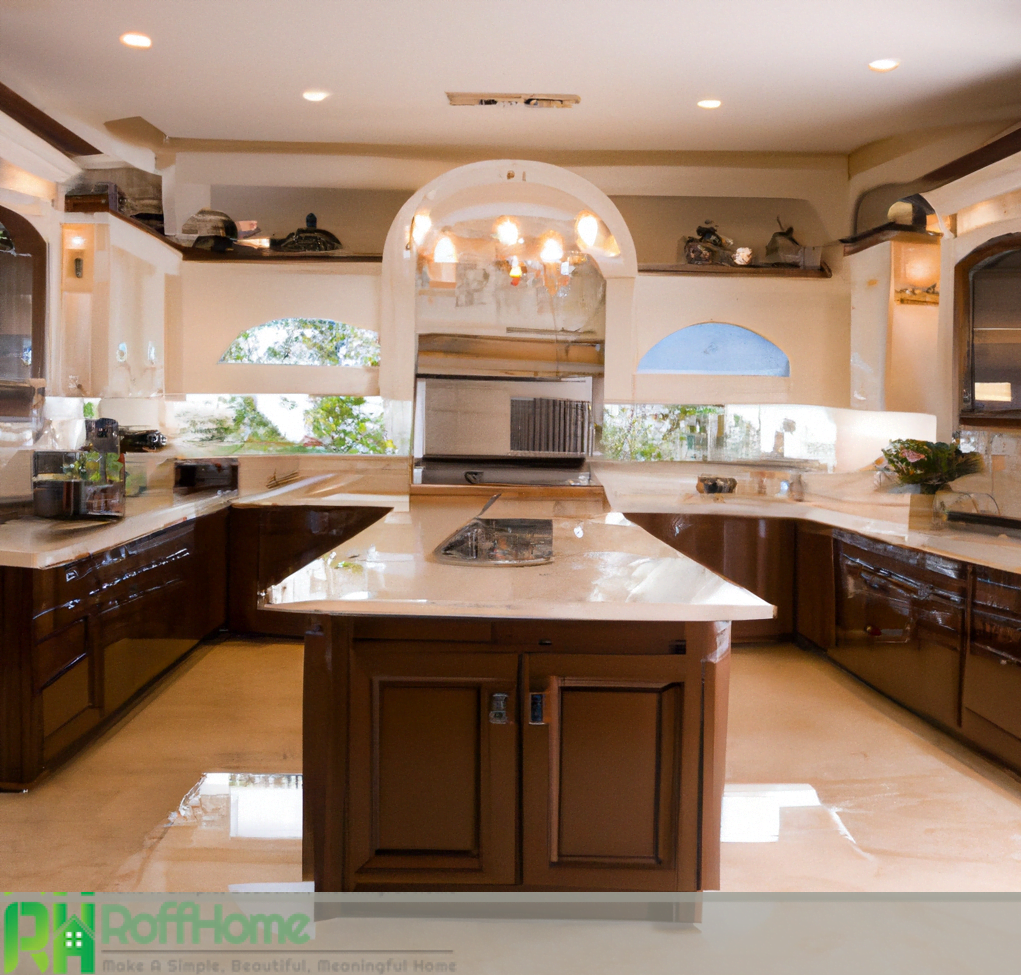
A large kitchen layout is more than just a functional space for meal preparation; it is the heart of a home, where family and friends gather to create memories and share experiences. Kitchen design is crucial in creating spacious kitchens catering to practical needs and aesthetic preferences.
Open-concept kitchens have gained popularity in recent years, emphasizing a seamless flow between the kitchen and other living areas. This design approach promotes a sense of spaciousness and encourages social interaction, making the kitchen the home’s focal point.
Efficient kitchen organization is key to maximizing the functionality of a large kitchen layout. Ample storage solutions, such as well-designed cabinets and pantry spaces, ensure every item has its place, reducing clutter and maintaining a clean and organized environment.
Proper lighting in kitchens is essential for both functionality and ambiance. Well-placed lighting fixtures, including task lighting and ambient lighting, enhance visibility and create a warm and inviting atmosphere.
Kitchen appliances and fixtures play a vital role in large kitchen layouts. Selecting the right elements, from high-end cooking appliances to stylish faucets and sinks, adds functionality and aesthetic appeal to the space.
Large Kitchen Islands: The Heart of a Spacious Culinary Haven
A large kitchen island is more than just a countertop extension; it serves as a spacious culinary haven’s central hub and focal point. This versatile feature offers a multitude of benefits, both practical and aesthetic, making it a must-have element in modern kitchen designs.
Functionality is key when it comes to large kitchen islands. With ample countertop space, they provide an ideal area for meal preparation, cooking, and serving. The expansive surface allows multiple people to work together comfortably, making engaging in collaborative cooking or hosting cooking parties easier. The extra space can also accommodate various appliances, such as a built-in cooktop, sink, or even a wine cooler, adding convenience and efficiency to the cooking process.
Beyond their practicality, large kitchen islands also contribute to the overall aesthetics of the space. They serve as a statement piece, adding visual interest and architectural appeal. With the right choice of materials, finishes, and design elements, the island can become a striking centerpiece that complements the style and theme of the kitchen. The island can be customized to reflect the homeowner’s taste and preferences, whether a sleek and modern design or a rustic and farmhouse-inspired look.
Furthermore, large kitchen islands seamlessly transition between the kitchen and the dining or living areas. They offer a casual dining spot, eliminating the need for a separate dining table and promoting a more relaxed and interactive atmosphere. Family and guests can gather around the island, enjoying a quick breakfast or engaging in conversation while meals are being prepared. This integration of dining and cooking spaces fosters a sense of togetherness and connectivity, making the kitchen island the social epicenter of the home.
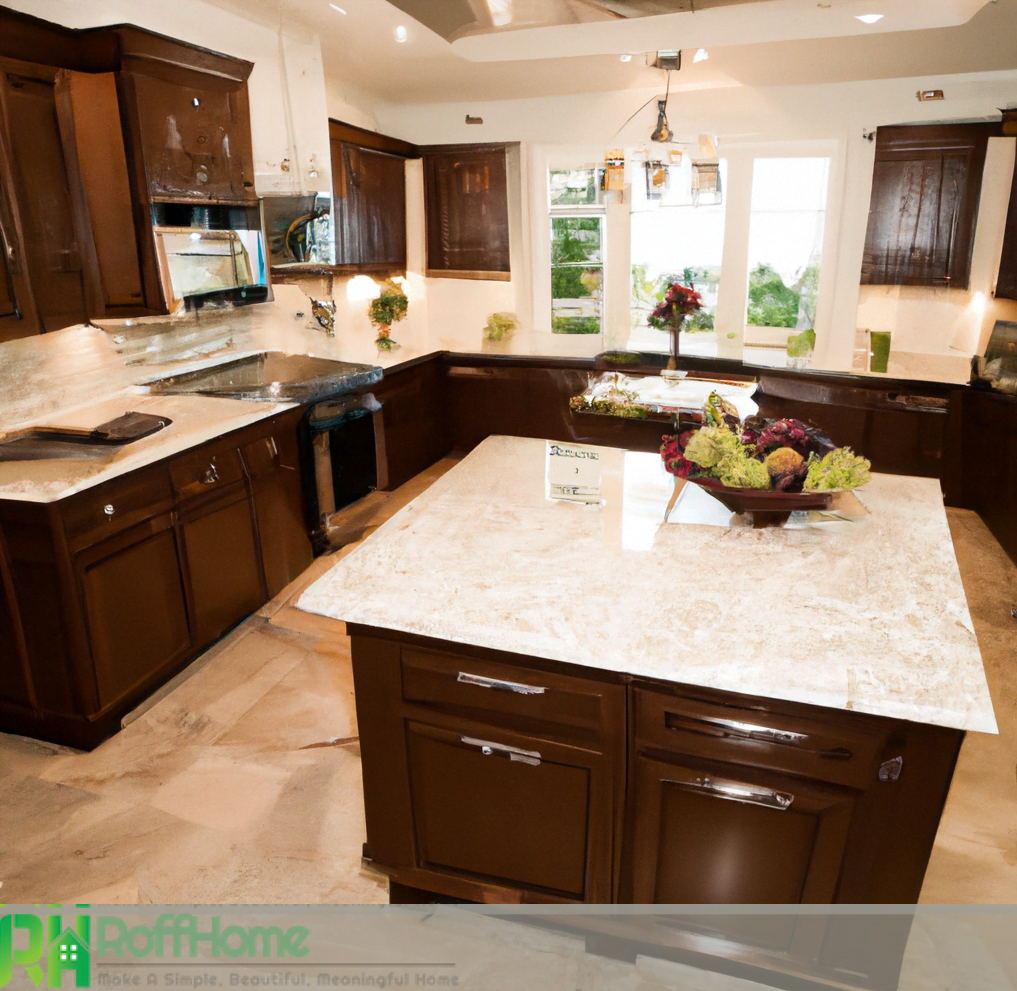
Large Kitchen Designs for Entertaining: Creating a Social Hub at Home
In today’s homes, the kitchen has become more than a space for cooking and meal preparation. It has become a social hub where family and friends gather to connect, celebrate, and entertain. Designing a large kitchen with entertaining in mind offers a perfect opportunity to create a social haven that seamlessly blends functionality and aesthetics.
Ample countertop space is essential in a large kitchen designed for entertaining. It provides room for food preparation, plating, and serving, allowing hosts to cater to their guests’ needs effortlessly. Installing a kitchen island or a spacious peninsula provides additional workspace and a casual dining area, creating a focal point for socializing and enjoying delicious meals together.
Storage solutions are also crucial in large kitchen designs for entertaining. Ample cabinets and pantry space ensure that all the necessary utensils, serving dishes, and supplies are neatly organized and easily accessible. This eliminates the need for constant trips to other areas of the house during gatherings and allows hosts to stay engaged with their guests.
A combination of task, ambient, and accent lighting can be strategically placed to highlight key areas and create a warm and inviting atmosphere. Dimmable lights offer flexibility, allowing hosts to adjust the lighting level to suit the mood of the occasion.
Additionally, incorporating technology into the kitchen design can enhance the entertaining experience. Installing a sound system or integrating smart home features allows hosts to set the right mood with music or easily control lighting and temperature.
Maximizing Storage Space in Large Kitchen Layouts: Tips and Tricks
In large kitchen layout, having ample storage space is crucial for maintaining organization and functionality. With a well-thought-out approach, homeowners can optimize storage solutions and make the most of their expansive kitchens.
Utilize Vertical Space: Take advantage of tall cabinets and install floor-to-ceiling shelving. This allows for more storage capacity and prevents wasted space above cabinets. Use adjustable shelves to accommodate items of varying heights.
Optimize Cabinet Organization: Incorporate pull-out shelves, lazy Susans, and deep drawers to make accessing items at the back of cabinets easier. Use dividers and organizers to keep smaller items and utensils neatly arranged.
Consider Corner Cabinets: Utilize corner spaces with corner cabinets that feature rotating shelves or pull-out systems. These make the most of otherwise awkward areas and provide convenient storage options.
Install a Pantry: If space permits include a walk-in or large pantry cabinet. These dedicated storage areas can accommodate dry goods, small appliances, and extra supplies, keeping the main kitchen area clutter-free.
Use the Island: If you have a kitchen island, make it multifunctional by incorporating drawers, shelves, or cabinets for additional storage. This helps keep frequently used items within reach while freeing up space in other cabinets.
Hang Utensils and Pots: Utilize wall space or install a hanging rack for utensils, pots, and pans. This saves cabinet space and adds a decorative touch to the kitchen.
Maximize Under-Sink Storage: Use the area beneath the sink by installing adjustable shelves, sliding drawers, or pull-out bins. This often underutilized space can store cleaning supplies, garbage bins, and extra kitchen layout essentials.
Explore Ceiling Storage: If you have high ceilings, consider installing overhead racks or hanging shelves to store infrequently used items such as seasonal appliances or serving platters.
Think Outside the Kitchen: If you have adjacent spaces like a nearby hallway or mudroom, consider adding storage cabinets or shelving to accommodate overflow items like bulk groceries or kitchen gadgets.
Purge and Declutter: Regularly assess your kitchen layout items and declutter unnecessary or unused items. This creates more space and ensures you only store items you need.
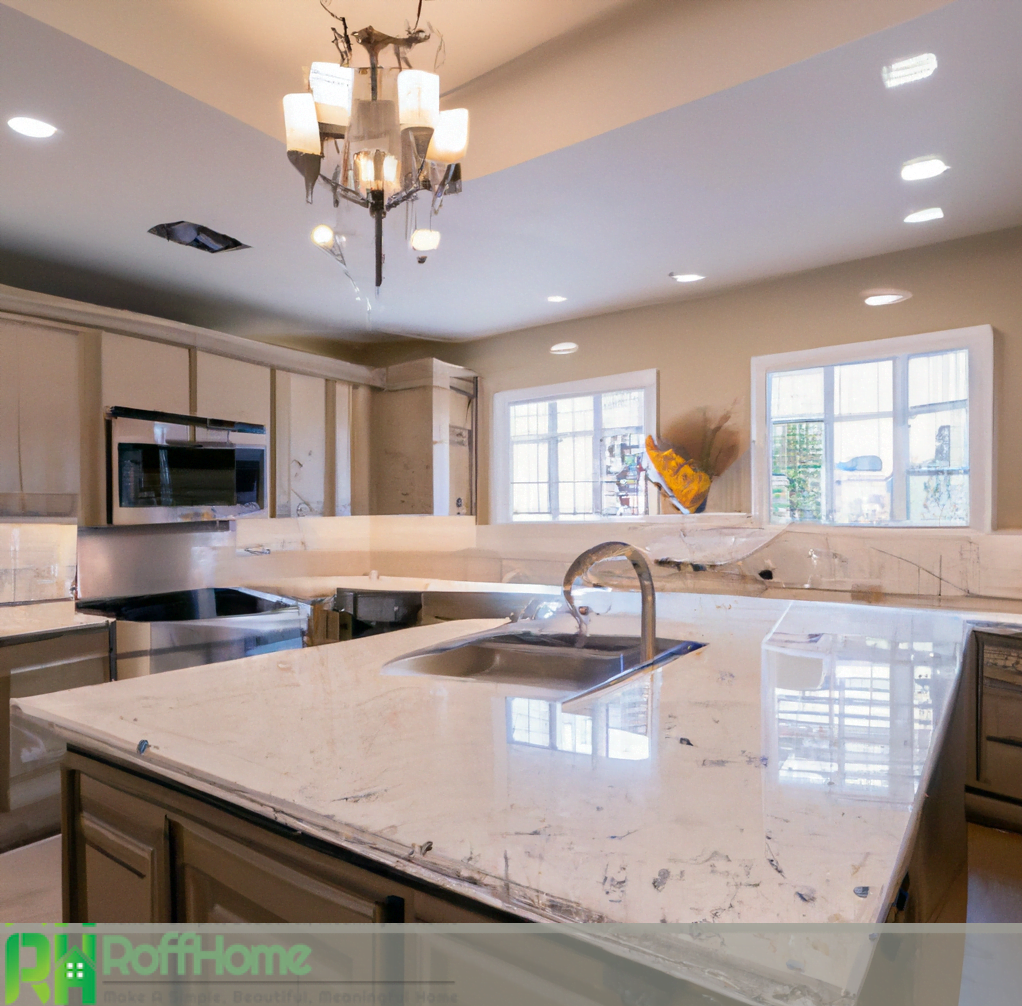
Key Elements to Consider When Planning a Large Kitchen Layout
Planning a large kitchen layout requires careful consideration of various key elements to ensure functionality, efficiency, and aesthetics. Here are some crucial factors to keep in mind when designing a large kitchen:
Workflow and Ergonomics: Design the kitchen layout with the “kitchen work triangle” principle in mind. This triangle connects the three main work areas—sink, stove, and refrigerator—allowing for easy movement and efficient workflow. Ensure that these elements are positioned near minimizing unnecessary steps while preparing meals.
Zones and Task Areas: Divide the kitchen layout into distinct zones based on functionality. Common zones include food preparation, cooking, cleaning, and storage. Designate specific areas for each task, ensuring that necessary tools and appliances are conveniently located within each zone.
Storage Solutions: Consider your storage needs and incorporate ample cabinetry, drawers, and pantry space. Different storage options like deep drawers, pull-out shelves, and vertical dividers are used to accommodate various items, including cookware, utensils, and pantry essentials. Maximize storage efficiency by organizing items based on the frequency of use and accessibility.
Kitchen Island or Peninsula:
- Integrate a large kitchen island or peninsula into the layout to serve as a versatile workspace and gathering area.
- Ensure it complements the flow of the kitchen and provides additional countertop space for meal preparation, serving, and casual dining.
- Consider incorporating storage options, seating, and functional features like a sink or a cooktop.
Lighting: Adequate lighting is essential in a large kitchen. Incorporate a combination of ambient, task, and accent lighting to create a well-lit and visually appealing space. Consider natural lighting options like windows and skylights, and supplement them with overhead fixtures, under-cabinet lighting, and pendant lights.
Appliances and Fixtures:
- Choose high-quality, efficient appliances and fixtures that align with your cooking preferences and lifestyle.
- Consider the size, functionality, energy efficiency, and overall design aesthetic.
- Ensure that appliances are strategically placed for easy access and optimal workflow.
Aesthetics and Design:
- Select a cohesive design style and color scheme that complements your home decor.
- Balance functionality with aesthetics, incorporating materials, finishes, and design elements that create a visually appealing space.
- Consider using textures, patterns, and focal points to add interest and personality to the kitchen.
Integration with Other Spaces: Plan a seamless integration between the kitchen and adjacent areas, such as dining or living spaces. Create a harmonious flow by aligning doorways, considering sightlines, and ensuring adequate movement and social interaction space.
Appliances and Fixtures: Choosing the Right Elements for a Large Kitchen
When designing a large kitchen layouts, selecting the right appliances and fixtures is crucial to ensure optimal functionality, efficiency, and aesthetic appeal. The following topics explore key considerations when choosing appliances and fixtures for a large kitchen layout:
Size and Scale: In a spacious kitchen, it’s important to choose appliances and fixtures that are proportionate to the size of the space. Oversized or undersized appliances can disrupt visual balance and functionality. Consider the dimensions of your kitchen and select appliances and fixtures that fit harmoniously within the kitchen layout.
Functionality and Features: Assess your cooking and lifestyle needs to determine the essential features and functions you require from your appliances. Consider options like multi-burner stoves, double ovens, professional-grade range hoods, and built-in microwaves. When selecting appliances, consider the capacity, energy efficiency, and ease of use.
Integration and Built-in Options: Built-in appliances provide a seamless and cohesive look in a large kitchen layouts. Consider integrating appliances like refrigerators, dishwashers, and wine coolers into cabinetry or paneling to create a streamlined appearance. This integration helps maintain a cohesive design aesthetic while optimizing functionality.
Ventilation and Range Hoods: Adequate ventilation is essential in a large kitchen layouts to remove smoke, steam, and odors. Choose a range hood that matches the size of your cooking area and opt for powerful extraction capabilities. Consider the design and materials of the range hood to ensure it complements the kitchen’s overall style.
Sink and Faucet: Sink and faucet are important fixtures in a large kitchen layouts, serving as functional elements for food preparation, cooking, and cleaning. Choose a spacious and deep sink to accommodate large pots and pans. The faucet should have a convenient sprayer option and a design that complements the kitchen’s overall aesthetic.
Lighting: Proper lighting enhances the functionality and ambiance of a large kitchen. Select task lighting for specific work areas, such as under-cabinet lighting for countertop tasks, and consider pendant lights or chandeliers for focal points. Incorporate dimmers to adjust the lighting intensity based on the desired atmosphere.
Design and Finish: The design and finish of appliances and fixtures should align with the kitchen’s overall style. Consider the finishes, such as stainless steel, brushed nickel, or matte black, and how they coordinate with other elements in the kitchen.
Energy Efficiency: Large kitchen layouts often utilize a significant amount of energy. Opt for energy-efficient appliances and fixtures with high Energy Star ratings to reduce energy consumption and lower utility costs. Look for appliances with advanced features like smart technology for energy management and eco-friendly modes.
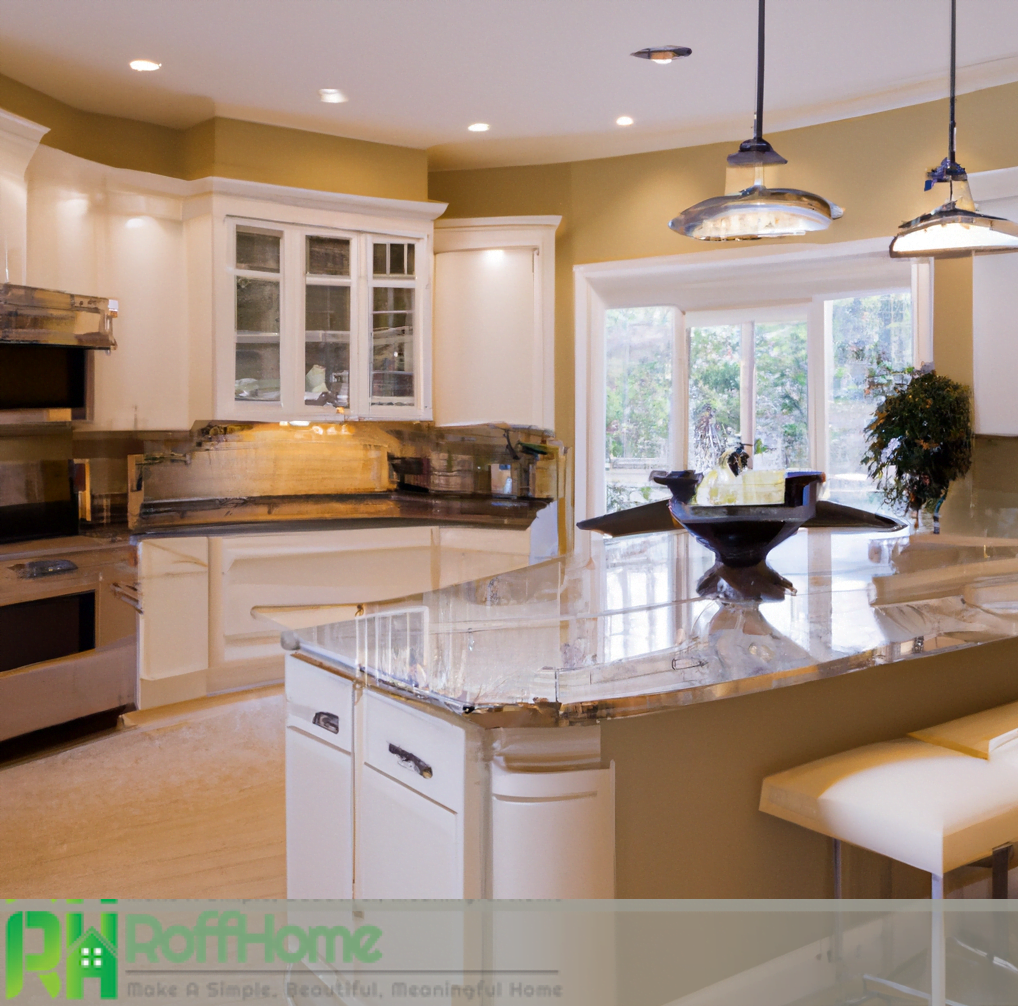
Budget-Friendly Solutions for Designing Large Kitchen Layouts
Designing a large kitchen layout doesn’t have to break the bank. With careful planning and smart choices, creating a spacious and functional kitchen while staying within a budget is possible. Consider the following budget-friendly solutions for designing large kitchen layouts:
Plan and Research: Before starting the design process, thoroughly plan and research various options. Look for affordable materials, fixtures, and appliances that still offer quality and durability. Review prices read reviews, and explore different suppliers to find the best deals.
Optimize Layout Efficiency: A well-designed layout can significantly affect a kitchen’s functionality and cost. To minimize plumbing and electrical changes, focus on optimizing the work triangle—sink, stove, and refrigerator. This approach can help reduce expenses associated with moving utilities.
Refurbish and Repurpose: Consider refurbishing and repurposing existing elements in the kitchen. Instead of replacing cabinets, please give them a fresh look by painting or refacing them. Explore thrift stores or online marketplaces for gently used appliances or fixtures that can be refurbished or incorporated into the kitchen layout design.
DIY Projects: Take on do-it-yourself projects to save on labor costs. For example, painting walls, installing backsplash tiles, or assembling flat-pack cabinets can be tackled with research, patience, and basic tools. However, be aware of your skill level and safety precautions to avoid costly mistakes or accidents.
Focus on Key Elements: Prioritize spending on key elements that significantly impact the kitchen’s overall look and functionality. For example, investing in quality countertops or a stylish backsplash can elevate the design without overspending on every aspect of the kitchen.
Shop Sales and Discounts: Watch for sales, discounts, and promotions offered by home improvement stores, appliance retailers, or online vendors. Timing your purchases strategically can help you secure significant savings on appliances, fixtures, and materials.
Consider Alternative Materials: Explore cost-effective alternatives for materials that still provide durability and visual appeal. For example, consider laminate or butcher block countertops instead of expensive stone options. Look for affordable flooring materials like vinyl or laminate that mimic the look of more expensive options.
Prioritize Storage and Organization: Efficient storage solutions can make a significant difference in the functionality of a kitchen. Focus on maximizing storage space with smart organizational systems, such as drawer dividers, shelf risers, or hanging storage. These solutions can help keep the kitchen clutter-free and prevent unnecessary expenses on additional storage units.
Lighting and Accessories:
- Enhance the kitchen’s ambiance and visual appeal with affordable lighting fixtures and accessories.
- Opt for budget-friendly pendant lights, under-cabinet lighting, or LED strips to create a well-lit and inviting space.
- Use affordable decor items like colorful rugs, curtains, or wall art to add personality and style.
Consider Long-Term Savings: While budget-friendly solutions are essential, consider the long-term savings of energy-efficient appliances or fixtures. Energy Star-rated appliances, LED lighting, and low-flow faucets can reduce utility costs over time, providing immediate and long-term financial benefits.
The Role of Lighting in Enhancing Large Kitchen Layouts
Lighting is crucial in enhancing large kitchen layouts’ functionality, aesthetics, and ambiance. Well-planned and strategically placed lighting fixtures can transform a spacious kitchen into a warm and inviting space. The following topics explore the significance of lighting in large kitchen layouts:
Ambient Lighting: Ambient lighting forms the foundation of a well-lit kitchen. It provides overall illumination to the space, ensuring it is evenly lit and eliminating shadows. Recessed ceiling lights or track lighting can be used in large kitchens to achieve ambient lighting. This type of lighting creates a bright and well-lit environment that enhances safety and visibility.
Task Lighting: Task lighting focuses on providing direct, localized illumination to specific work areas in the kitchen. It is particularly important in large kitchens with multiple workstations and preparation areas. Under-cabinet lighting is commonly used to illuminate countertops, making it easier to perform tasks such as chopping vegetables or reading recipes. Pendant lights or adjustable track lighting can also be employed above kitchen islands or peninsulas to provide task lighting for cooking and food preparation.
Accent Lighting: Accent lighting adds visual interest and highlights specific features or design elements in the kitchen. In large kitchen layouts, accent lighting can draw attention to architectural details, decorative elements, or focal points such as a display cabinet or a kitchen backsplash. This type of lighting creates a sense of depth and dimension, adding a touch of elegance and sophistication to the space.
Natural Lighting: Maximizing natural light is beneficial in large kitchen layouts. Incorporate windows, skylights, or glass doors to allow ample sunlight to enter the kitchen. However, consider using window treatments to control glare and protect sensitive surfaces or materials from excessive sunlight.
Dimmers and Controls: Installing dimmers and lighting controls in a large kitchen offers flexibility in adjusting the intensity of the light to suit different activities and moods. Dimmers allow you to create a softer, more intimate atmosphere during mealtime or social gatherings. Lighting controls also provide the convenience of controlling different lighting zones separately, allowing you to customize the lighting based on specific needs.
Lighting Fixtures: The choice of lighting fixtures can greatly impact the overall aesthetic of a large kitchen. Pendant lights, chandeliers, and decorative sconces can serve as statement pieces and add a touch of style to the space. Consider the size, shape, and material of the fixtures to ensure they complement the overall design theme of the kitchen.
Layered Lighting: Layered lighting combines different lighting types—ambient, task, and accent—to create a dynamic and visually appealing effect. In a large kitchen, incorporating layered lighting techniques helps to create depth, highlight key areas, and provide a well-balanced illumination throughout the space. This approach ensures that all kitchen areas are adequately lit, adding drama and sophistication.
Energy Efficiency: In large kitchen layouts, energy-efficient lighting options, such as LED bulbs or fixtures, should be considered. LED lighting is long-lasting, consumes less energy, and produces minimal heat. Incorporating energy-efficient lighting reduces electricity costs and promotes sustainability and environmental consciousness.

The Benefits of a Large Kitchen: Creating a Functional and Stylish Space
A large kitchen offers numerous advantages, providing homeowners with a functional and stylish space for cooking, entertaining, and gathering. The following topics explore the benefits of a large kitchen and how it contributes to the overall functionality and style of a home:
Ample Storage Space: One of the key benefits of a large kitchen is its abundance of storage space. With more square footage, there is room for additional cabinets, pantry space, and storage solutions. This allows homeowners to keep their kitchen organized, store cookware, appliances, and pantry items conveniently, and reduce clutter on countertops.
Enhanced Workflow and Efficiency: A large kitchen layouts allows for a more efficient workflow, especially when designed with the kitchen work triangle principle in mind. The work triangle connects the sink, stove, and refrigerator, ensuring easy movement and reducing unnecessary steps while preparing meals. With more space, multiple people can work in the kitchen simultaneously without feeling crowded.
Design Flexibility: The spaciousness of a large kitchen layouts provides ample room for creativity and design flexibility. Homeowners can experiment with various layouts, kitchen islands, and seating options to create a customized space that suits their preferences and lifestyle. The freedom to incorporate different design elements, materials, and finishes allows for a personalized and unique kitchen aesthetic.
Entertainment and Socializing: A large kitchen layouts is a hub for entertainment and socializing. It becomes a gathering space where family and friends can come together, cook, and enjoy meals. The ample countertop space and seating options, such as a kitchen island or a dining nook, make it easy to accommodate guests and create a welcoming atmosphere for social interactions.
Versatile Functionality: The size of a large kitchen layouts enables it to have multiple functions beyond cooking. It can serve as a workspace for various activities, such as homework, crafts, or home office tasks. The additional space can accommodate appliances like a double oven or a wine cooler, expanding the kitchen’s functionality and versatility.
Enhanced Design Features: With a larger area, homeowners can incorporate enhanced design features into their kitchens. This may include high-end appliances, luxurious countertops, intricate backsplashes, or statement lighting fixtures. These design elements add sophistication and visual appeal to the kitchen, making it a home focal point.
Comfort and Accessibility: A large kitchen layouts allows for comfortable movement and accessibility. There is ample space for multiple people to navigate the kitchen without feeling cramped. This is particularly beneficial for individuals with mobility challenges or those who enjoy cooking as a family activity.
Increased Property Value: A well-designed and spacious kitchen adds value to a home. Large kitchens are highly desirable among potential buyers and can contribute to a higher resale value. Investing in a large kitchen benefits homeowners in the present and offers a return on investment in the future.
In conclusion, large kitchen layouts provide ample space for storage, enhanced functionality, versatile design options, and a welcoming environment for socializing and entertaining. With their numerous benefits, large kitchen layouts offer homeowners the opportunity to create a functional and stylish culinary haven.

